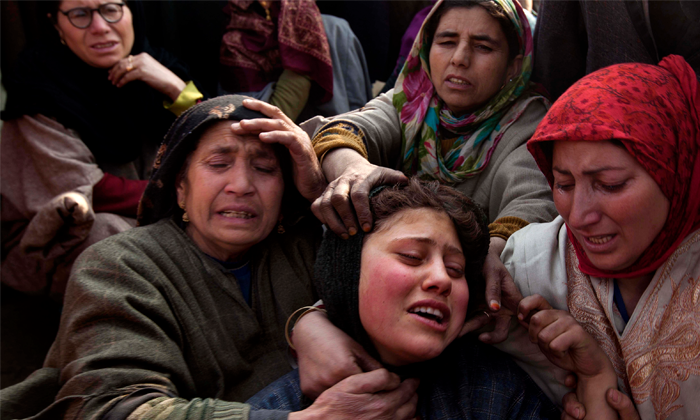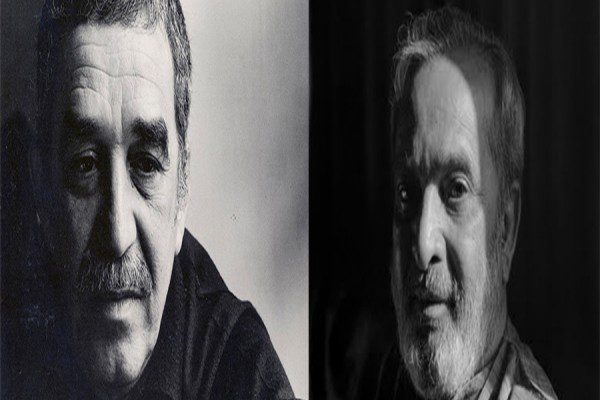A few weeks back, I met three journalists in Delhi. Two of them had flown from Srinagar, the same afternoon; while the third one lives in the Indian capital. As we were chatting in a quaint cafe; one of the two, who had travelled from Srinagar, received a phone call, and went outside to answer it. It took her a while before she returned looking visibly hassled. “They have raided his house again. As expected, they were asking for his hard disc.’ She was talking about an independent journalist who had, of late, become the target for harassment at the hands of Kashmir police.
“The discourse has been strategically crafted and executed since 2011 during which the news of valley receiving ‘one million tourists,’ made rounds in the news sphere, whereas the arrests of teenage boys (couple of which I accidentally happened to witness) remained under wraps.”
After that phone call, our friendly chat took a serious turn as the journalists, from Srinagar, mentioned how such police raids were increasingly becoming commonplace in the Valley.
The state authorities keep an eye to suppress any report that might not cohere with the picture of ‘constructed peace’ that it has been painting. Pertinent to mention, earlier this year, sixteen people were detained for being suspects in using social media to instigate violence. It comes as no surprise that the state government has created a ‘cell’ to monitor content in cyber space. ‘The police’s cyber cell has acquired sophisticated internet Protocol tools to trace the people uploading objectionable content on Facebook and other social networking sites. Over the period of time, many sites openly advocated freedom for Kashmir,’ reports Peerzada Ashiq in Hindustan Times.
Such behavior on the part of the state reeks of desperation to cure its own paranoia by whatever means it can.
Creating ‘New’ Reality:
Curbing dissent and hushing ‘voices’ has proven to be an effective strategy employed by the state authorities which is busy creating a ‘new reality’ to manage the peace discourse.
Starting with uploading pictures of Tulip Garden on Twitter by Omar Abdullah, the chief minister of Jammu and Kashmir, to some Indian journalists writing about ‘Kashmir wanting to move on’ but its past being held hostage by a handful of ‘elites’; or the news of ‘ten Kashmiri applicants’ who had appeared for the civil services of India, and such related pieces of information, is an attempt to carve a parallel narrative of ‘normalcy’ returning to the valley.
The discourse has been strategically crafted and executed since 2011 during which the news of valley receiving ‘one million tourists,’ made rounds in the news sphere, whereas the arrests of teenage boys (couple of which I accidentally happened to witness) remained under wraps. While Indian and international press continued to write how, ‘…Kashmir Valley is enjoying an unexpected season of tranquility. Tourists from across India have descended on the valley, filling just about every airplane seat, hotel room and houseboats…,’ there was no report about the restiveness followed by the arrests. That is because the motive has been to focus on suppressing the news of any incident which stands the remotest chance to burst the precarious bubble of ‘constructed peace.’
However, ‘…in this peace discourse what has been forgotten are the promises made in the Assembly when youths were killed on the streets in 2010.’
Mock Peace Strategies
In order to support the ‘constructed peace,’ the state is keeping people busy by creating situations, at cultural and social levels, and then offers solutions making it appear as though it is busy solving issues (that it schemes in the first place).
A method commonly called “problem -reaction- solution” is very well adopted by the state in which the government ‘creates a problem, a “situation” referred to cause some reaction in the audience,’ and provides an alternative or a solution to look like a savior of sorts.
One such instance that comes to mind was government’s plan to demolish two historically and culturally significant bridges: Zaina Kadal and Zero Bridge. Only after much provoked anger and indignation; intervention by heritage conservationists, the opposition PDP, articles appearing online, in newspapers, campaigns started on social media, and the chief minister urged, by various people on Twitter, to take action against the demolition; were the decisions altered: not to demolish the monumental Zaina Kadal, and only ‘repair’ Zero Bridge.
Such pre-meditated tactics are announced to divert the attention of the masses to social issues, and digress from the unsolved political dispute that Kashmir is.
The real threat that an ordinary Kashmiri faces is the impunity that shields Indian troopers under black laws such as AFSPA (Armed Forces Special Powers Act), DAA (Disturbed Area Act) and PSA (Public Safety Act). In January, this year, a youth, Atlaf Ahmad Sood, was shot dead by CISF, at Boniyar in north Kashmir’s Uri town of Baramulla district. ‘The CISF personnel had opened firing on the people, who were protesting against lack of electricity supply, without any provocation.’
Perceived Peace
The noise of ‘constructed peace’ trying to form the plinth of a ‘new reality’ conveniently brushes aside the casualties of the armed rebellion, that broke out in Kashmir against the Indian rule (in 1989) which include the loss of 80,000 lives, thousands of enforced disappearances, and ‘the presence of unmarked graves at 38 sites near the mountains of Kashmir,’ as reported by State Human Rights Commission (SHRC), a human rights body appointed by the state government.
Author James Baldwin argues, ‘…leaving aside the bloody catalogue of oppression which we are too familiar with any way–what the system does to the subjugated is to destroy (…) sense of reality.’
A few weeks ago, someone had tweeted about the death of Sajid Ahmad Darzi, the 13-year-old protestor who lost his arm before succumbing to the injuries received during the anti-India protests in 2010. I favourited the tweet and some others re-tweeted it before the news of his death got lost in a maze of thousands of tweets including the ones which carried the articles and write ups on normalcy and peace returning to the valley.
(Farah Bashir, a former photojournalist, works as a researcher. She lives in Singapore.)














